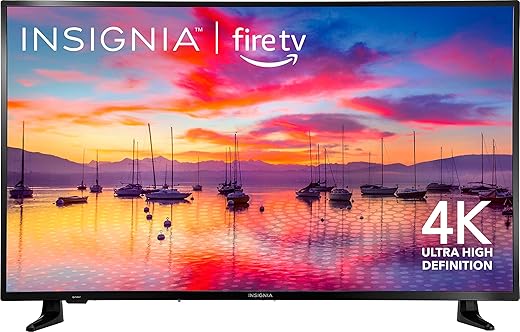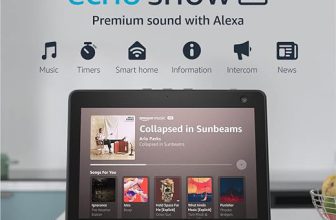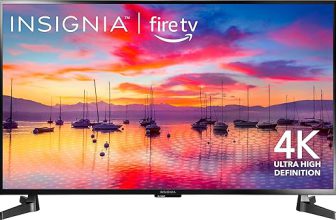
As we all strive to make more sustainable choices in our daily lives, the impact of our electronics often weighs heavily on our minds. TVs, once considered mere entertainment devices, have become a focal point in the conversation about energy consumption and environmental responsibility. In this blog post, I will explore the exciting advancements in energy-efficient TV technology, discuss the benefits of choosing these models for both your wallet and the planet, and take a look at what the future holds for this rapidly evolving industry. Together, we can navigate this important topic and understand how our choices can lead to a greener future.



Current Landscape of Energy-Efficient TVs
As technology continues to evolve, the quest for energy-efficient televisions has become increasingly important for both consumers and manufacturers. With a growing awareness of environmental issues and rising energy costs, the demand for TVs that minimize energy consumption while delivering high-quality viewing experiences has surged. This section will explore the current state of energy-efficient TVs, focusing on the technologies that enhance efficiency, the energy ratings and certifications in the market, and how these factors influence consumer choices.



Technologies Driving Energy Efficiency
LED (Light Emitting Diode)
LED televisions have been a significant advancement in energy efficiency compared to traditional LCD TVs. By using LED backlighting, these TVs consume less power while improving picture quality.
- Key Features:
- Lower power consumption than traditional LCDs
- Slimmer design and lightweight
- Enhanced brightness and color accuracy
Example: The Samsung QN90A is an LED TV that boasts impressive energy efficiency without sacrificing performance. It features Quantum Dot technology, which provides vibrant colors while operating at reduced energy levels.
OLED (Organic Light Emitting Diode)
OLED technology takes energy efficiency a step further. Each pixel emits its own light, which allows for deeper blacks and improved contrast ratios. This self-emissive nature means that OLED TVs can turn off individual pixels, consuming less energy when displaying darker scenes.
- Key Features:
- Exceptional contrast and color vibrancy
- Energy savings when displaying dark images
- Wide viewing angles
Example: The LG OLED C1 series is renowned for its energy efficiency and exceptional picture quality. With an automatic brightness control feature, it optimizes energy usage based on ambient light.
QLED (Quantum Dot LED)
QLED TVs combine the benefits of LED technology with Quantum Dot enhancements. This results in improved brightness and color accuracy, which can also lead to energy savings.
- Key Features:
- High brightness levels with lower energy use
- Excellent color reproduction
- Durable and long-lasting
Example: The Samsung Q80T QLED TV provides an excellent balance of picture quality and energy efficiency. With its Quantum HDR technology, it adapts to varied lighting conditions, ensuring optimal energy usage.
Energy Ratings and Certifications
ENERGY STAR Certification
One of the most recognized symbols of energy efficiency is the ENERGY STAR certification. TVs that display this label are tested and meet strict energy efficiency guidelines set by the U.S. Environmental Protection Agency (EPA).
Benefits of ENERGY STAR Certified TVs:
- Up to 30% more energy-efficient than standard models
- Lower operating costs, saving consumers money on utility bills
- Contributes to reduced greenhouse gas emissions
Other Certifications
In addition to ENERGY STAR, various other certifications and ratings help consumers identify energy-efficient products:
- TCO Certified: Focused on sustainability and socially responsible manufacturing.
- EPEAT: Evaluates the environmental impact of products over their entire lifecycle.
Comparison of Energy Ratings
| TV Brand/Model | Technology | ENERGY STAR Certified | Annual Energy Consumption (kWh) | Estimated Cost to Run/Year |
|---|---|---|---|---|
| Samsung QN90A | LED | Yes | 100 | $12 |
| LG OLED C1 | OLED | Yes | 80 | $10 |
| Samsung Q80T QLED | QLED | Yes | 90 | $11 |
Influence on Consumer Choices
With a plethora of energy-efficient options available in the market, consumers are becoming more informed about their choices. The availability of energy ratings and certifications plays a crucial role in guiding purchasing decisions.
Factors Influencing Consumer Choices
- Environmental Awareness: More consumers are considering the ecological impact of their purchases and prefer brands that focus on sustainability.
- Cost Savings: The long-term savings on energy bills can be a compelling reason to invest in energy-efficient TVs.
- Performance vs. Efficiency: Consumers are increasingly looking for a balance between high performance and energy efficiency, often leading them to consider brands that offer both.
In summary, the current landscape of energy-efficient TVs showcases a variety of advanced technologies designed to reduce energy consumption while enhancing viewing experiences. With certifications like ENERGY STAR and growing consumer awareness, the trend towards energy-efficient televisions is likely to continue, offering practical benefits for both the environment and household budgets.
Technological Innovations Driving Energy Efficiency
In recent years, technological advancements have significantly influenced energy efficiency in televisions, leading to lower electricity consumption and reduced carbon footprints. This section explores key innovations in display technologies, smart features, and artificial intelligence that contribute to more energy-efficient TVs.



Advancements in Display Technologies
The evolution of display technologies has played a pivotal role in enhancing energy efficiency. Key advancements include:
- OLED (Organic Light Emitting Diodes):
OLED TVs, such as the LG OLED C1 Series, utilize organic compounds that emit light when electricity is applied. This technology allows for individual pixel illumination, enabling true blacks and reducing energy consumption when displaying darker scenes. - QLED (Quantum Dot Light Emitting Diodes):
Samsung’s QLED Q80A series employs quantum dot technology to enhance color and brightness while maintaining energy efficiency. QLEDs can achieve higher brightness levels without consuming excessive power, making them a suitable choice for well-lit environments. - Mini-LED:
Brands like TCL have introduced Mini-LED technology, which uses smaller LEDs to improve backlighting precision. This results in better contrast ratios and energy savings since the backlight can be dimmed or turned off in darker areas of the screen.
Comparison Table: Display Technologies
| Technology Type | Key Feature | Example Model | Energy Efficiency Benefit |
|---|---|---|---|
| OLED | Individual pixel illumination | LG OLED C1 Series | Reduces power in dark scenes |
| QLED | Enhanced brightness with low power | Samsung QLED Q80A | Higher brightness with lower energy use |
| Mini-LED | Precise backlighting control | TCL 6-Series | Better contrast and reduced power consumption |
Smart Features That Optimize Energy Use
Modern TVs come equipped with smart features that not only enhance user experience but also contribute to energy savings. Key features include:
- Ambient Light Sensors:
TVs like the Sony A8H OLED are equipped with sensors that adjust brightness based on room lighting. This ensures optimal viewing while minimizing energy consumption in dim environments. - Power-Saving Modes:
Many smart TVs, including the VIZIO M-Series Quantum, offer power-saving settings that automatically reduce energy use during inactivity. Users can set timers or activate sleep modes, ensuring that the TV is not consuming power when not in use. - Energy Usage Monitoring:
Some models, like the Samsung Frame TV, provide real-time energy consumption data, allowing users to track and adjust their usage habits for improved efficiency.
Key Smart Features for Energy Efficiency
- Adaptive Brightness Control: Automatically adjusts brightness based on ambient light.
- Sleep Timers: Automatically power off the TV after a designated time.
- Energy Monitoring Apps: Track usage patterns and suggest energy-saving tips.
The Role of Artificial Intelligence in Energy-Saving Capabilities
Artificial Intelligence (AI) is increasingly integrated into television technology, playing a crucial role in optimizing energy efficiency. Notable contributions include:
- Content-Aware Processing:
AI algorithms in TVs like the LG NanoCell Series analyze the content being displayed and adjust settings accordingly. For example, when watching a brightly lit scene, the TV can increase brightness, while darker scenes can be dimmed, maximizing energy efficiency. - User Behavior Learning:
TVs equipped with AI, such as the Sony X900H, can learn user preferences and habits over time. By understanding when users typically watch, the TV can enter low-power modes during idle times, conserving energy. - Automatic Updates:
AI can also facilitate automatic software updates that improve energy efficiency. Brands like Roku ensure that their operating systems are regularly updated with enhancements that optimize performance and reduce energy consumption.
AI Technology Benefits
- Dynamic Picture Adjustment: Enhances viewing experience while conserving energy.
- Reduced Standby Power: Learns and minimizes power usage when not in active use.
- Consistent Upgrades: Ensures the TV remains as energy-efficient as possible with minimal user input.
By leveraging these technological innovations, consumers can enjoy high-quality viewing experiences while being mindful of energy consumption. The combination of advanced display technologies, smart features, and AI-driven capabilities provides practical solutions to enhance energy efficiency in TVs.
Embracing Innovation for a Sustainable Tomorrow
In conclusion, the future of energy-efficient TVs is promising and essential for minimizing the ecological footprint of our entertainment choices. By staying informed about advancements in technology and recognizing the importance of energy ratings and sustainable practices, I can make responsible purchasing decisions that not only benefit my household but also contribute to a healthier planet. As I navigate this evolving landscape, I am empowered to choose products that reflect my commitment to sustainability.







I recently helped my parents switch to a LG OLED TV, and their energy consumption dropped by almost 30%! They were shocked at the difference. It’s a win-win — better picture quality and lower bills! 🎉
That’s a fantastic success story! LG OLEDs are known for their efficiency and stunning visuals. Happy to hear your parents are enjoying their new setup!
Pro tip: When shopping for a new TV, always check the Energy Star ratings! It can make a huge difference in energy consumption. Plus, some states offer rebates for buying energy-efficient models. 🙌
Absolutely! The Energy Star rating is a game-changer for making smart choices. And those rebates are a nice bonus! Thanks for sharing your tip!
What’s your top recommendation for the most energy-efficient TV out there right now? I’m looking to upgrade soon! 🔍
I’d recommend checking out the latest models from Sony and LG. They offer some of the best energy efficiencies combined with superior picture quality. Happy shopping!
That’s awesome to hear! QLEDs are definitely leading the way in energy efficiency. It’s great when tech not only entertains us but also helps us save on bills. Keep enjoying those shows!
I’ve got a Samsung QLED TV, and I’m amazed at how low my energy bill is compared to my old plasma TV! Anyone else notice this? It’s like saving money while enjoying my binge-watching sessions. 📺💡
Could you dive deeper into how OLED technology specifically contributes to energy efficiency compared to LCDs? I’m curious about the science behind it! 🤔
Great question! OLEDs differ from LCDs in that they emit their own light, which can lead to less energy use, especially in darker scenes. I’ll definitely expand on that in a future post!